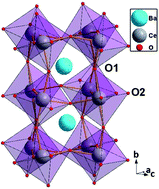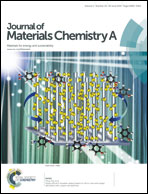Oxide ion and proton transport in Gd-doped barium cerate: a combined first-principles and kinetic Monte Carlo study
Abstract
Oxide ion and proton transport properties in the fuel cell electrolyte Gd-doped BaCeO3 are investigated by first-principles density-functional calculations and kinetic Monte Carlo simulations. Behind the apparent complexity of the energy landscape (related to the low-symmetry of the system), general tendencies governing the energy barriers can be extracted. In particular, the set of barriers is tested with respect to the Bell–Evans–Polanyi (BEP) principle that relates the activation energy Ea of a series of similar chemical reactions to their reaction enthalpies ΔH. This rule is found poorly satisfied in the case of oxide ion migration, but much better satisfied for proton hopping mechanisms. Protonic reorientations, by contrast, do not obey the BEP rule. Kinetic Monte Carlo simulations give insight into the macroscopic transport properties. We observe that dopants act as traps for oxygen vacancies and slow down their motion, whereas their effect on the protonic diffusion coefficient is more complex. This is related to the fact that a two-state picture roughly applies to the oxygen vacancy energy landscape, while it does not apply to the protonic one. Oxide ion migration exhibits strong anisotropy, the motion of the oxygen vacancies being favored in the equatorial planes, while protonic diffusion is found more isotropic.


 Please wait while we load your content...
Please wait while we load your content...